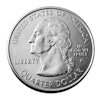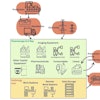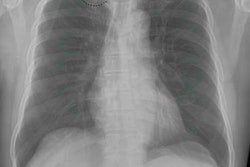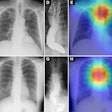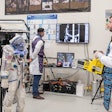Monday, December 2 | 11:50 a.m.-12:00 p.m. | SSC09-09 | Room E450B
The potential for deep learning to objectively estimate bone mineral density on standard chest x-rays is the focus of this Monday presentation.Radiologists have long depended on dual-energy x-ray absorptiometry (DEXA) to evaluate conditions such the loss of bone mass (osteopenia) and the loss of bone density (osteoporosis). While osteopenia can be detected on x-ray, diagnoses are often subjective and come with high variability between readers.
This group of researchers, led by Dr. Peter Kamal from Johns Hopkins Hospital, sought to determine if artificial intelligence (AI) and deep convolutional neural networks (CNNs) could more reliably detect osteopenia and osteoporosis on chest radiographs.
The dataset included 875 postmenopausal women who had undergone DEXA scans and posteroanterior and lateral chest x-rays within three months of the DEXA scans. Training of the deep CNN was done with 70% of the x-ray images, while the remaining 30% were used for testing, ensuring no patient overlap.
A network architecture was created on a variety of standard deep CNNs and used to differentiate between normal bone mineral density, osteopenia, and osteoporosis, among other tasks. Its performance was measured using area under the curve (AUC) analysis.
Kamal and colleagues determined that the deep CNNs trained on posteroanterior radiographs outperformed the deep CNNs trained on lateral radiographs. The AI algorithms also detected osteopenia or osteoporosis with an AUC of 0.78 from posteroanterior radiographs and an AUC of 0.73 on lateral radiographs. When the AI model was asked to distinguish between osteoporotic and normal radiographs, AUC reached 0.87.
Deep CNNs can provide "an objective method for the prediction of osteopenia and osteoporosis on chest radiographs, which suggests potential use for opportunistic screening of these conditions," the researchers concluded.


